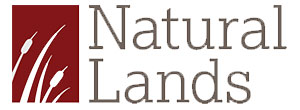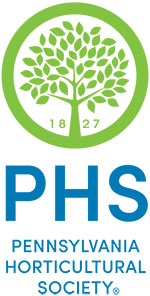Additional Resources for Woodland and Tree Protection
Pennsylvania Department of Conservation and Natural Resources (PA DCNR)

Selecting Trees for Pennsylvania's Changing Climate provides guidance on choosing trees based on changing growth conditions particularly warmer and wetter seasons. The webpage also includes a link to PA DCNR's Climate Change Adaptation Plan, which contains climate change projections for individual tree species in southeast PA.
Invasive Plant Fact Sheets in the identification of invasive plants, including trees, shrubs, vines, herbs, and aquatic plants. The fact sheets provide treatment and protection suggestions for your property.
Community Tree Management provides several resources for training programs, technical assistance, funding, and more related to caring for trees in communities.
Managing Your Woods offers resources for managing preserved woodlands.

The Arbor Day Foundation provides Tree facts, information on the benefits of trees, and many other tree related links.
Audubon's Native plant database provides information by zip code on native plants that support bird-friendly habitat as well as links to local resources.
 Natural Lands provides an explanation of and advice on dealing with deer browse, which poses a significant challenge for managing and maintaining diverse woodland habitat in southeastern Pennsylvania.
Natural Lands provides an explanation of and advice on dealing with deer browse, which poses a significant challenge for managing and maintaining diverse woodland habitat in southeastern Pennsylvania.
The Pennsylvania Forestry Association provides a wide range of information supporting sustainable forestry in Pennsylvania.
 The Pennsylvania Horticulture Society administers the PHS Tree Tenders program, which provides training for community volunteers for all aspects of tree selection, planting, and stewardship.
The Pennsylvania Horticulture Society administers the PHS Tree Tenders program, which provides training for community volunteers for all aspects of tree selection, planting, and stewardship.
The Tree Equity Score website overlays data related to a community's existing tree canopy and surface temperature with demographic data like population density, race, income, and health to create a score that identifies areas where planting trees could achieve greater equity within the built environment.
WeConservePA (formerly the Pennsylvania Land Trust Association) maintains natural resource and conservation guides, model standards, and other useful resource protection information on their dedicated website, ConservationTools.org. The search box can be used to easily find information and model standards on specific resources.
Food forests, also called forest gardens, are diverse plantings of fruit and nut-bearing trees and shrubs that are growing in popularity in both public and private spaces. While the cultivated varieties of fruit and nut trees are not all native to our area they can be beneficial sources of nutritious crops and a fun stewardship project for communities or families. More information on this topic can be found on the website of Project Food Forest as well as the Philly Orchard Project.

The Homegrown National Park website provides a wealth of information and resources for homeowners interested in improving the biodiversity and ecosystem function of their own backyards using native plants. The Homegrown National Park concept is "a bottom-up call-to-action to restore habitat where we live and work…extending national parks to our yards and communities."

The National Park and Recreation Association (NRPA) website provides information on Urban Parks which provide a wide array of benefits including providing healthy places to exercise, managing stormwater runoff and helping clean the air, catalyzing economic and community development, and providing safe, close to home recreation options.

